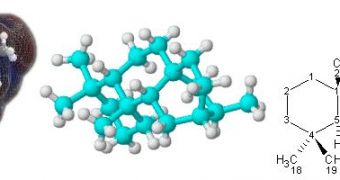Certain types of molecules are capable of organizing themselves in specific patterns on the surface of materials, but thus far researchers have been unable to find a way of predicting what patterns will result. Having this ability is absolutely essential for developing new materials and electronics, which are heavily dependent on accurately organized structures on their surface. This goal is made even more difficult by the fact that the structures need to be very tiny in size, preferably at the nanoscale. Now, German researchers at the Ludwig-Maximilians-Universitat München believe they may have found a way to do just that.
The science group, which was led by LMU Munich Center for Nanoscience (CeNS) physicist Dr. Bianca Hermann, managed to combine an approach derived from statistical physics, accurate and detailed simulations, and scanning tunneling microscope (STM) images, to produce a model that could predict the patterns that would form with a high degree of precision. The breakthrough is likely to benefit research in a vast array of scientific fields, and to promote the usage of patterned, nanoscale structures in a vast array of industrial applications.
“With the help of the model, we can generate a wide variety of patterns that reproduce surprisingly well the arrangements observed experimentally. We want to extend this approach to other surface symmetries. Already now the areas of molecular electronics, sensor applications, surface catalysis and organic photovoltaics can profit from our model. Its ability to predict structures formed by self-organization allows optimization of molecular building blocks prior to synthesis,” Hermann says. She is also the author of a new study detailing the findings, which appears in the February 16 issue of the respected scientific journal Nano Letters.
“In the end, we were able to show that the molecular geometry and a few salient features encode the structural motifs observed,” Dr. Thomas Franosch, who is associated with the Cluster of Excellence “Nanosystems Initiative Munich” (NIM), and has also been part of the investigation, says. “We plan to extend the approach to other types of surface symmetries, but the model already provides an important theoretical tool, because it helps us to forecast the type of surface pattern that a given functional molecule will form. This means that the design of molecules can be optimized during the synthetic phase, so as to obtain surfaces with the desired characteristics,” Hermann concludes.

 14 DAY TRIAL //
14 DAY TRIAL //